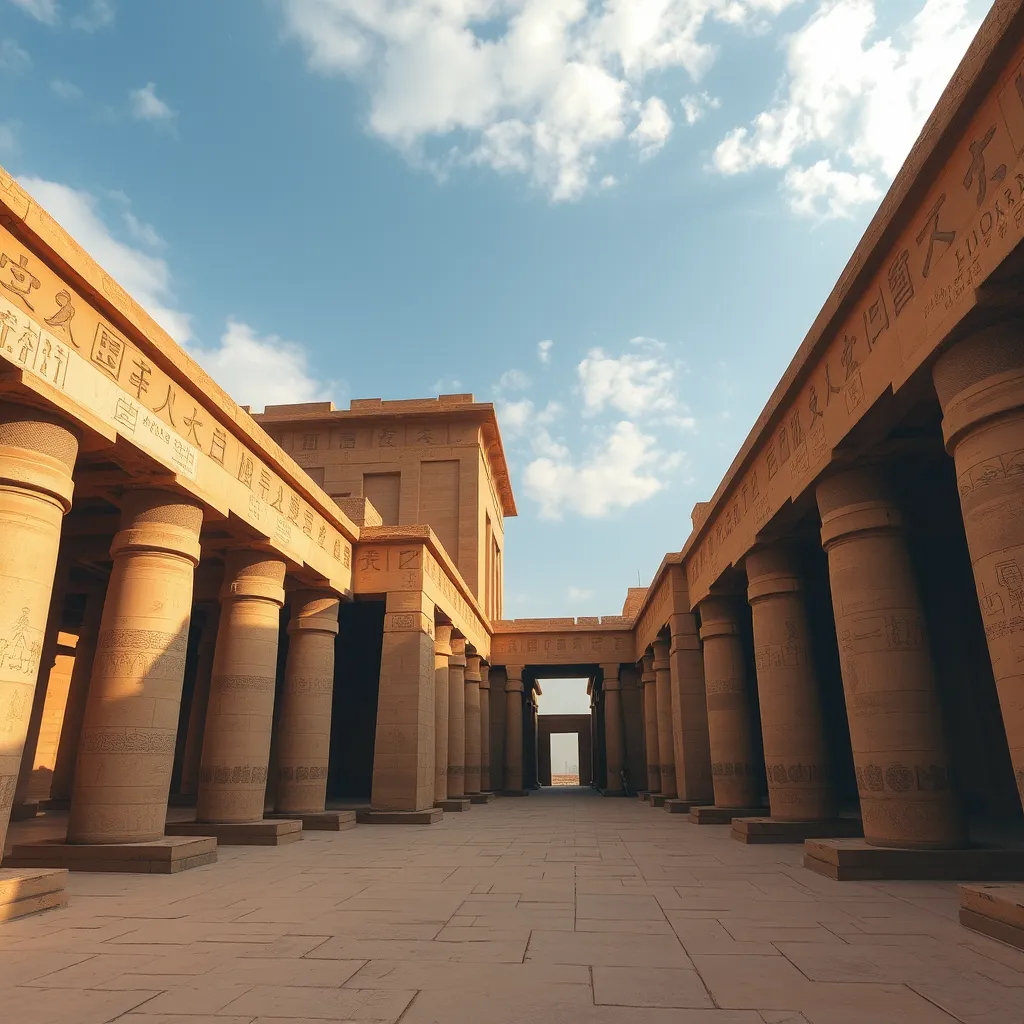Explore the Temples of Ancient Egypt: A Virtual Tour
I. Introduction to Ancient Egyptian Temples
Temples in ancient Egypt were not merely places of worship; they were the very heart of Egyptian civilization. These architectural masterpieces served as religious sanctuaries, political powerhouses, and community centers where daily life and spirituality intertwined. The significance of temples extended beyond their walls, influencing every aspect of life in ancient Egypt, from governance to agriculture.
Religious practices within these temples were deeply integrated into the culture and society, showcasing the Egyptians’ devotion to their gods and the afterlife. Temples were also the centers of economic activity, housing vast estates and employing numerous workers.
II. The Architectural Marvels of Ancient Egypt
Ancient Egyptian temples are renowned for their grandeur and intricate designs, which reflect the civilization’s artistic and engineering prowess. Key architectural features include:
- Pylons: Massive gateway structures that marked the entrance to the temple.
- Hypostyle Halls: Large halls supported by columns, often adorned with elaborate carvings.
- Sanctuaries: Inner chambers where the deity’s statue was housed and worshipped.
- Obelisks: Tall, four-sided, narrow tapering monuments that often stood at the entrance.
In terms of materials, ancient Egyptians primarily used local stone, such as limestone, sandstone, and granite. Construction techniques involved complex planning and labor, with skilled artisans and laborers working together to create these monumental structures.
III. The Most Iconic Temples to Explore
A. Karnak Temple Complex
The Karnak Temple Complex is one of the largest religious complexes in the world, dedicated to the Theban triad of Amun, Mut, and Khonsu. Spanning over 200 acres, it boasts a rich history dating back to the Middle Kingdom, with construction continuing into the Ptolemaic period.
Highlights of the temple layout include:
- The Great Hypostyle Hall, featuring 134 towering columns.
- The Sacred Lake, used for purification rituals.
- Numerous temples, chapels, and pylons that showcase the evolution of Egyptian architecture.
B. Luxor Temple
Located on the east bank of the Nile, Luxor Temple is famous for its stunning architecture and historical significance. Built during the New Kingdom, it was dedicated to the god Amun and served as a center for the annual Opet Festival.
Unique features of Luxor Temple include:
- The Avenue of Sphinxes, leading to Karnak Temple.
- Massive statues of Ramses II that flank the entrance.
- Beautifully preserved reliefs depicting historical events and religious rituals.
C. Temple of Hatshepsut
The Temple of Hatshepsut, dedicated to the female pharaoh Hatshepsut, stands as an architectural wonder in Deir el-Bahari. It reflects her unique reign and highlights her achievements as one of the few female rulers of ancient Egypt.
Insights into the temple architecture include:
- Terraced levels that blend harmoniously with the surrounding cliffs.
- Elaborate wall reliefs that narrate Hatshepsut’s divine birth and trade expeditions.
- The use of colonnades to create an impressive visual effect.
IV. Virtual Tours: Technology Meets History
Advancements in technology have paved the way for virtual tours of ancient Egyptian temples, allowing people from around the world to explore these historical sites without needing to travel. Virtual tour technology leverages 3D modeling and panoramic photography to create immersive experiences that bring the past to life.
Benefits of virtual tours include:
- Accessibility to remote or previously inaccessible sites.
- Cost-effectiveness for educational institutions and individual learners.
- Opportunity to explore at one’s own pace, with no time constraints.
V. Interactive Features of the Virtual Tour Experience
The virtual tour experience offers numerous interactive features that enhance user engagement and learning:
- 360-degree views: Allow users to look around and experience the environment as if they were there.
- Immersive experiences: Include sounds of the environment, such as birds and water, to create a realistic atmosphere.
- Educational resources: Expert commentary and historical context enrich the learning experience.
VI. Cultural and Historical Context of the Temples
Understanding the cultural and historical context of ancient Egyptian temples is crucial for appreciating their significance. The temples were dedicated to a pantheon of gods and goddesses, including:
- Amun, the king of the gods.
- Isis, the goddess of motherhood and magic.
- Osiris, the god of the afterlife.
Rituals and ceremonies conducted at the temples varied, but they often included offerings, festivals, and processions, all aimed at appeasing the gods and ensuring the prosperity of the land.
VII. The Future of Virtual Exploration in Archaeology
The rise of virtual tours is revolutionizing public access to historical sites. As technology continues to advance, the potential for virtual exploration in archaeology grows:
- Enhancing public engagement with cultural heritage.
- Providing educational tools for teachers and students.
- Possibly reducing the strain of tourism on fragile archaeological sites.
VIII. Conclusion: Embracing Ancient Egypt Through Virtual Tours
Preserving and exploring the ancient temples of Egypt is vital for understanding this remarkable civilization. Virtual tours offer a unique opportunity to engage with history and appreciate the architectural and cultural achievements of the ancient Egyptians.
We encourage readers to take advantage of virtual tours to deepen their understanding of ancient Egyptian culture and experience the wonders of these magnificent temples from the comfort of their own homes.




